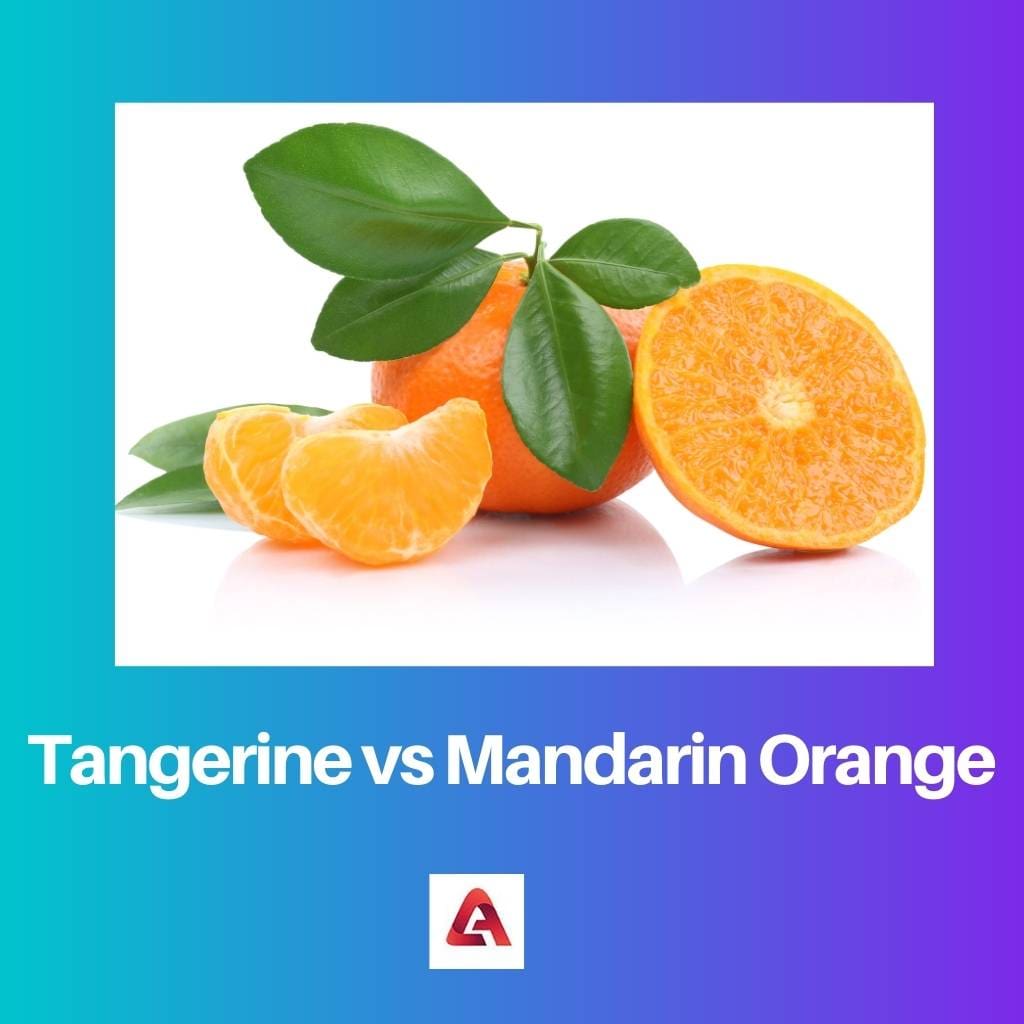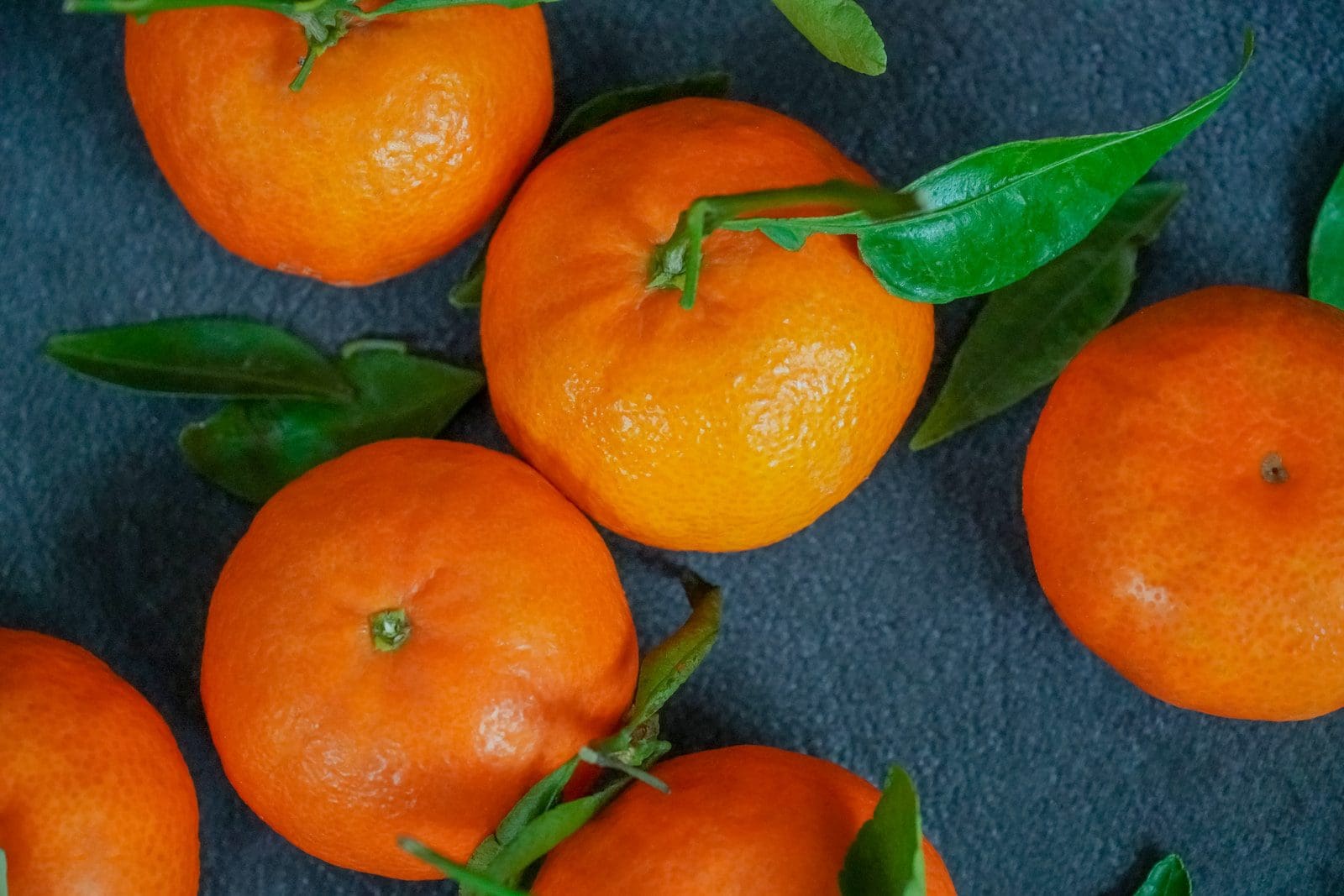Tangerine and Mandarin Oranges are citrus fruits belonging to the family of Rutaceae. They are confused with being simply an orange fruit by many.
Key Takeaways
- Tangerines and mandarins are citrus fruits, but tangerines are larger and more vibrant oranges than mandarins.
- Mandarins have a sweeter and more intense flavor than tangerines, which can be tart or slightly sour.
- Tangerines are seedless, while mandarins may have seeds or be seedless.
Tangerine vs Mandarin Orange
Tangerines are a specific type of mandarin orange, smaller in size, with a deep orange color, and pebbly-skinned. Mandarin oranges are a broader category of citrus fruits, smaller and sweeter than common oranges, and known for their easy-to-peel skin.

Tangerine is a sub-category of Mandarins, and they belong to the family of Rutaceae. This implies the fact that all Tangerines are a type of Mandarin, but not all Mandarin oranges are Tangerines.
Mandarin oranges are citrus fruits belonging to the family of Rutaceae. Mandarins are further divided into three main sub-groups- Satsumas, Tangerines, and Miscellaneous Hybrids.
Comparison Table
| Parameters of Comparison | Tangerine | Mandarin Orange |
|---|---|---|
| Type | Tangerines are citrus fruits belonging to the sub-group of Mandarins | Mandarins are citrus fruits that are further divided into 3 main sub-groups, namely, Satsumas, Tangerines, and Miscellaneous Hybrid. |
| Colour | Tangerines have a darker or reddish shade of orange color. | Mandarins have a lighter and brighter shade of orange color. |
| Skin | Tangerines have thick skin, which makes them an ideal export fruit. | Mandarins have smooth and thin skin making it easy to peel the skin off. |
| Classification | All Tangerines are a type of Mandarins. | Not all Mandarins are Tangerines. |
| Shape | Tangerines are round in shape and have a more spherical shape than Mandarins. | Mandarins are oblate in shape and have a less spherical shape than Tangerines. |
| Temperature | Tangerines grow better in low and dry conditions. | Mandarins are delicate to low temperatures and dry conditions. |
| Taste | Tangerines are less sweet and more tart in taste than Mandarins. | Mandarins are sweeter and less tart in taste than Tangerines. |
What is Tangerine?
Tangerine is a citrus fruit belonging to the citrus family of Rutaceae. They are a sub-group of Mandarins that includes three main types: Satsumas, Tangerines, and Miscellaneous Hybrids.
Tangerines get their name from a city in Morocco known as Tangiers. These were exported to Europe from Tangiers. Tangerines are round and spherical and are reddish-orange or dark orange.
Tangerines survive and grow well in low temperatures and dry conditions. Tangerines have a tart taste and are less sweet than Mandarins.

What is Mandarin Orange?
Mandarin orange is a citrus fruit belonging to the citrus family of Rutaceae. Mandarins are further divided into three main sub-groups, namely, Satsumas, Tangerines, and Miscellaneous Hybrids.
Mandarin orange received its name from the Chinese officials who were called Mandarin because of the signature orange clothing they used to wear.
Mandarins are delicate to low temperatures and dry conditions and hence, cannot survive well in such conditions. Mandarins are sweeter and less tart in taste than Tangerines.

Main Differences Between Tangerine and Mandarin Orange
- Tangerines are tarter and less sweet, whereas Mandarins are less tarty and sweet.
- Tangerines have around and spherical shapes, whereas Mandarins are oblate and less spherical.

- https://onlinelibrary.wiley.com/doi/abs/10.1002/agr.20275
- https://onlinelibrary.wiley.com/doi/abs/10.1002/jsfa.4663

The historical background of the names of tangerines and mandarin oranges is quite captivating. It’s interesting to see how these stories are tied to the origins and development of these fruits.
Indeed, Dylan42. The history behind the names adds an intriguing layer to the understanding of these fruits.
Absolutely fascinating. The historical contexts enrich the knowledge regarding tangerines and mandarins.
The comparison table is very helpful to understand the differences between tangerines and mandarin oranges. The fact that tangerines have a more spherical shape than mandarins, and that mandarins are less spherical is quite intriguing. I’m glad this information is available.
I agree, Elsie. The comparison table is quite useful in summarizing the differences between tangerines and mandarin oranges.
Tangerines are a specific type of Mandarin, while Mandarin oranges are a broader category of citrus fruits, so it’s interesting to see how they differ. It is fascinating to discover that tangerines are seedless and have a darker reddish shade of orange, while mandarins may have seeds and have a brighter shade of orange. I think this is worth exploring.
The deeper color of tangerines is due to their thicker skin, ideal for export. Their tart taste, if not very sweet, and their round shape are more differences worth noting.
Regarding their taste, tangerines are more acidic and less sweet due to their thin peel, and mandarins are less acidic and sweeter because of their thicker peel. I find this fascinating.
The clear comparison between the characteristics of tangerines and mandarin oranges is quite educational. I appreciate the scientific approach taken to describe these differences.
Absolutely, Damien28. This scientific delineation of the fruits’ attributes helps in understanding them better.
Well said, Damien28. It’s helpful to have such detailed comparisons that provide clarity about these fruits.
The detailed explanation of the unique characteristics and differences between tangerines and mandarin oranges is quite eye-opening. It enriches the understanding of these fruits in a captivating way.
Absolutely, Cox Fiona. This level of detail in the explanation adds depth to our knowledge about tangerines and mandarin oranges.
Well put, Fiona. The depth of information provided here is indeed captivating and enlightening.
The description of tangerines and mandarins, their origin, and distinctive characteristics provided here is very informative. As someone who loves citrus fruits, this is quite interesting to read.
Absolutely, Helena. The details provided help in understanding the unique aspects of these fruits better.
It’s great to see a thorough explanation of the differences between tangerines and mandarin oranges. I’m appreciating the level of detail provided here.
It is interesting to learn the history behind the names of these fruits, and to discover the wide variety that exists among them. I am also intrigued by the fact that Tangerines are better in low and dry conditions, while mandarins are delicate to low temperatures.
That’s right, Emma, and the seed differences between these two fruits are also quite interesting. Tangerines being seedless and mandarins having seeds or being seedless is a difference worth noting.
The fact that mandarin oranges got their name from Chinese officials who wore orange clothing is fascinating. It is great to learn more about the history of these fruits.
Discovering that tangerines are less sweet and more tart in taste than mandarins, and that mandarins grow better in low temperatures and dry conditions, whereas tangerines survive well in such conditions, is quite fascinating.
Agreed, Ethompson. The temperature and taste differences between tangerines and mandarin oranges are quite intriguing to learn about.